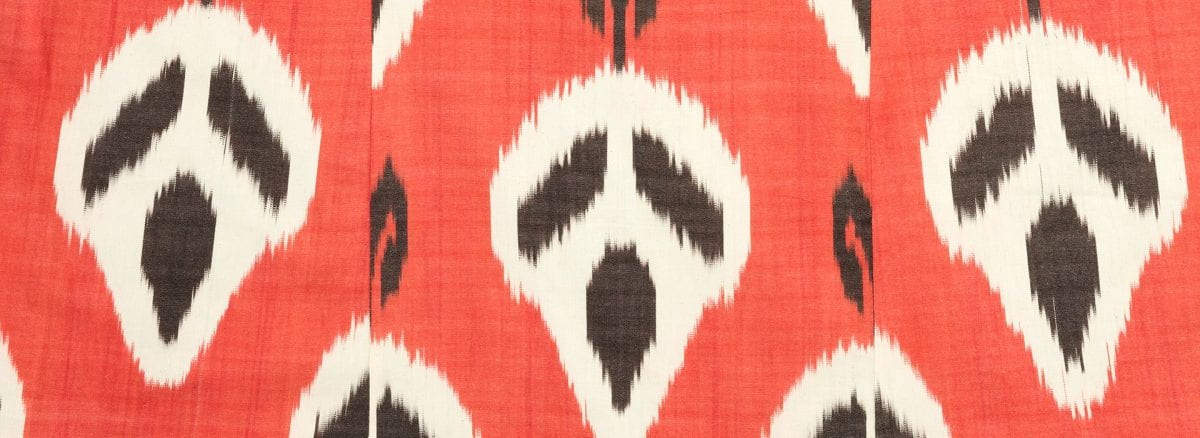In the 19th century, Central Asia was renowned for its production of sumptuous silk fabrics. Ikat cloth in particular was prized for its radiant colors, mesmerizing patterns and complex resist-dye process involving multiple skilled artisans. Worn by people who could afford it regardless of age, gender and religion, ikat came to define social status in the region.
In the 20th century, under Bolshevik and then Soviet rule, wearing ikat cloth was discouraged. Traditional workshops were forced to close, nearly extinguishing the art form. Following Uzbekistan’s independence in 1990, entrepreneurs in the Fergana Valley began reviving handmade ikat silk weaving as a symbol of national identity, drawing international attention.

Contemporary artist Dilyara Kaipova dabbled in theater design, puppetry and painting before turning to the medium of textiles. Musing that Western icons like Gucci and Mickey Mouse held more appeal for Uzbeks than traditional ikat designs, she decided to blend the two in her first textile project in 2016 called “Captain Ikat,” an ikat fabric with a superhero pattern. She worked at length with craftsmen in the Fergana Valley to transfer her designs to cotton warps, which were then tied, dyed and woven into cloth in the traditional way.
Kaipova believes that modern images from mass culture invigorate traditional cloth. Here, Kaipova’s eye-catching design uses the mask from the “Scream” movie series in ikat fabric tailored as a traditional robe. Her work has been shown in New York, Russia, Georgia, the United Arab Emirates and throughout Central Asia.


